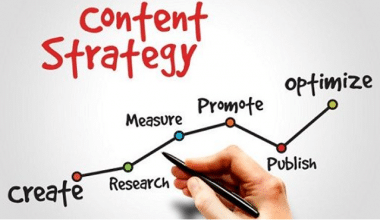A marketing strategy is a key part of the growth of any business. It describes the plan and strategies a business will use to find and connect with its target audience and turn them into loyal customers. This article will discuss what a marketing strategy is, why it’s important for businesses as well as how to create a good strategy. It will also give examples of great marketing strategies and different types of marketing strategies, such as digital marketing strategy.
Marketing Strategy
A marketing strategy refers to a business’s overall game plan for reaching prospective consumers and turning them into customers of their products or services. It encompasses the company’s value proposition, key brand messaging, data on target customer demographics, and other high-level elements. Hence, communicating to consumers what the company stands for, how it operates, and why it deserves their business. Statistically, companies with a documented marketing strategy are 313% more likely to be successful than those without.
There are four Ps of marketing, and a thorough marketing strategy should cover the four Ps (product, price, place, and promotion).
Importance of Having a Marketing Strategy
Every business should have a solid marketing strategy for the following reasons:
- Focus and direction: A marketing strategy is a roadmap for achieving an organization’s objectives, identifying target markets, selecting the right marketing mix, focusing efforts and also effectively utilizing resources.
- Competitive advantage: A well-defined marketing strategy enhances an organization’s competitive edge by identifying unique selling propositions. By understanding the needs and preferences of their target audience, businesses can tailor their products and services to meet those needs, thus increasing their chances of success.
- Resource optimization: A marketing strategy optimizes resource allocation, maximizing return on investment through market research and customer data analysis, focusing on areas with high potential for sales and profits.
- Brand building: Having a marketing strategy is crucial for building and promoting a brand, creating a strong identity, and establishing a positive image. Hence, understanding target audience needs and creating consistent messaging across channels will help to build trust and loyalty.
- Marketplace insights: Marketing strategy development involves researching and analyzing market trends to gain insights into target audiences, competitors, and also industry trends. Hence, it will help to identify opportunities, threats, and adapt to market changes, staying ahead of the competition.
How to Create a Marketing Strategy
To create a good marketing strategy, you can follow these steps:
#1. Conduct a Situation Analysis
Start by conducting a SWOT analysis (Strengths, Weaknesses, Opportunities, and Threats) to understand your current situation. Moreover, by conducting analysis, you’ll be able to identify your strengths, weaknesses, opportunities, threats, and how you compare to your competitors.
#2. Define Your Target Audience
The next thing to do is to research your target audience. Find out their behaviors, preferences, and demographics. Generally, defining your target audience will help you tailor your marketing efforts to reach the right people.
#3. Set Goals and Objectives
Establish clear and measurable marketing goals that align with your overall business objectives. These goals should be specific, measurable, achievable, relevant, and time-bound (SMART). For example, your goal could be to increase website traffic by 20% within six months.
#4. Develop Your Unique Value Proposition
To create a better marketing strategy, you have to determine what sets your product or service apart from competitors and define your unique value proposition. Determining this will help you differentiate your brand and also communicate its benefits to your target audience.
#5. Choose Marketing Tactics
Determine the marketing tactics that align with your goals and target audience. This could include social media advertising, content marketing, email marketing, SEO, influencer marketing, etc. Therefore, select the tactics that will have the greatest potential to influence your goals.
#6. Create a Marketing Budget
Set a budget for your marketing activities. Consider the costs associated with each tactic, such as advertising expenses, content creation, and marketing tools. Also, ensure that your budget is realistic and aligned with your goals
#7. Create a Pricing and Positioning Strategy
When creating your pricing strategy, ensure it aligns with your desired brand positioning. Consider factors such as value, competition, and target customer perceptions. Ultimately, your pricing strategy should support your brand image and value proposition.
#8. Develop a Content Schedule
One thing that will help you stay consistent on your marketing journey is to have a content calendar. Therefore, you should create a schedule outlining when and where your content will be posted. Creating and sticking to the calendar will also help you stay organized in your marketing efforts.
#9. Measure and Analyze Results
Continuously measure the effectiveness of your marketing strategies and analyze the results. Use analytics tools to track key metrics and evaluate the impact of your marketing activities on your goals. This will help you identify areas for improvement and refine your approach.
#10. Stay Updated with Trends
Keep up with industry news and trends to stay ahead of the competition. Regularly review and update your marketing plan to reflect changes in the market and adjust your strategies accordingly. Marketing is a dynamic field, and staying current is essential for success.
Examples of a Good Marketing Strategy
Examples of a good marketing strategy include:
Internal Marketing Strategy
This is one of the examples of a marketing strategy that focuses on communicating and engaging with employees to align them with the company’s objectives. It can involve internal emails, newsletters, and updates to inform employees about company changes, branding, and procedures.
One of the good examples of a brand using memes and social sharing as a marketing strategy is Balenciaga, a high-luxury fashion brand. They used memes and social media sharing to create outrageous products at high prices. However, the campaign became popular as more people saw and shared the products, bridging the gap between the brand’s audience and its high prices.
Targeted Email Marketing
BuzzFeed, a content platform, uses highly targeted email marketing campaigns. They allow users to choose the content they want to receive, such as cooking recipes, style tips, news, and learning courses. Using this approach ensures that users receive the content they want, resulting in more effective promotions.
Market Segmentation
Zara, An international retailer, uses the Boston Consulting Group (BCG) Matrix to market segmentation. This matrix helps them understand their product growth rate and relative market share. Instead of direct advertising, Zara strategically places its products in physical stores, attracting customers without aggressive advertising.
Influencer Campaigns
An influencer campaign is also one of the good examples of a marketing strategy. Dior, a luxury fashion house, launched the “67 Shades of Dior” campaign to celebrate the launch of its Forever Foundation product line. They selected influencers to represent each of the 67 new shades and shared their content on social media. The campaign represented diversity and achieved a significant audience reach and engagement.
Types of Marketing Strategies
There are various types of marketing strategies that businesses can use to promote their products and services. Some examples are digital marketing which includes content marketing, and social media marketing strategy.
Digital Marketing Strategy
A digital marketing strategy is a plan of action to establish an internet presence through online channels and reach a target audience. The strategy involves using various online marketing channels such as organic search, social media, paid ads, and website content to increase awareness about a business and attract new customers to the brand. A digital marketing strategy helps businesses achieve specific digital goals through carefully selected mediums.
Digital marketing campaigns are the building blocks and actions within a digital marketing strategy that move the business toward a specific end goal. Digital marketing tactics are the specific actions taken to implement the strategy, such as sending emails to customers, creating blog posts, and launching advertisements.
Benefits of Using Digital Marketing Strategy
Digital marketing offers numerous benefits for businesses, including:
- Increased reach: While digital marketing makes it simple for businesses to reach a global audience, traditional marketing is geographically limited. Hence, it opens up growth opportunities and visibility for businesses of all sizes.
- Lower cost: Digital marketing strategy provides cost-effective solutions for promoting businesses locally or internationally; hence, SEO, social media, and content marketing can be implemented without significant costs. This lower cost allows smaller companies to compete with larger ones using targeted strategies.
- Increased engagement: A digital marketing strategy is designed to be highly engaging, allowing users to interact with content through actions like sharing, liking, and saving. These actions can be measured, enabling businesses to create more engaging posts and increase brand awareness.
- Targeted audience engagement: Digital marketing enables businesses to target specific audiences easily. Techniques like SEO and PPC help organizations create the right marketing strategy for the right audience, making communication and interaction more effective.
- Easy to measure results: Unlike traditional marketing methods, digital marketing allows for precise campaign performance measurement. Businesses can track metrics like website traffic, conversions, and engagement rates, providing valuable insights for optimizing marketing strategies.
- Increased brand loyalty: Digital marketing helps businesses build brand loyalty by providing personalized experiences and targeted messaging. By engaging with customers in real-time and addressing their needs, businesses can create a loyal customer base that contributes to long-term success.
- Improving conversion rates: Digital marketing allows for seamless and immediate interactions with customers, making it easier for them to make purchases. With a well-designed website and effective marketing campaigns, businesses can improve conversion rates and drive more online sales.
Tips on Creating a Digital Marketing Strategy
- Identify specific marketing goals: Determine what you want to achieve with your digital marketing efforts. This could include increasing website traffic, generating leads, or improving brand awareness.
- Research customer channel behavior and marketplace activity: Understand how your target audience interacts with digital channels, and analyze your competitors’ strategies.
- Define and communicate your channels’ differentials: Highlight your digital channels’ unique aspects to encourage customers to use them.
- Allocate budgets for acquisition, conversion, retention, and growth: Determine how much you’re willing to spend on different aspects of your digital marketing strategy.
- Implement and execute your strategy: Put your plan into action by utilizing various online marketing channels, such as SEO, social media marketing, and email marketing.
- Monitor and analyze the results: Regularly track the performance of your digital marketing efforts and make adjustments as needed to optimize your strategy.
Using social media marketing strategy is to use social media platforms such as Instagram, Twitter, and Facebook to promote a brand and sell products or services. It involves creating engaging content, interacting with customers, and using social media management skills and tools. A social media marketing strategy is essential for businesses to stand out in a crowded digital landscape and achieve their marketing goals.
There are several tools available for social media marketing. Here are some examples:
- Hootsuite: Hootsuite is a popular social media management tool that allows you to handle multiple social media accounts in one dashboard. It offers collaboration, task assignments, social media calendar, and scheduling updates. Also, it integrates with various social media platforms like Facebook, Twitter, Instagram, Google+, YouTube, Reddit, Tumblr, and Storify.
- Social Champ: Social Champ is a social media scheduling and management tool that helps you spread your content on all platforms simultaneously. It offers features like bulk upload, auto-posting via RSS feed, content recycling, content suggestion, link shortening and tracking, analytics, team collaboration, and a Chrome extension. It is suitable for beginners and businesses looking for an easy-to-use interface.
- Social Pilot: Social Pilot is a comprehensive social media marketing tool offering teams and agencies features. It helps automate tedious tasks and allows you to manage social media marketing on a large scale. Additionally, it provides solutions for specific marketing activities and offers various features to save time and resources.
- Sprout Social: Sprout Social is a social media management and engagement tool that helps build brand visibility, responsiveness, and efficiency. It offers review systems, task management, tagging, and organized customer messages. It helps create a seamless user experience and build customer loyalty.
- Facebook Ads Manager: Facebook Ads Manager is a tool specifically designed for managing and optimizing Facebook paid campaigns. It provides detailed analytics, targeting options, ad creation, and performance tracking.
Content Marketing Strategy
Content marketing strategy is an approach focused on creating and distributing valuable, relevant, and consistent content to attract and retain a clearly defined audience and drive profitable customer action. Instead of directly promoting products or services, content marketing provides useful and relevant content to prospects and customers to help them solve their issues.
Content marketing is a long-term strategy focusing on tailoring content to your target audience, creating a narrative, and storytelling to make it more authentic. It involves planning, creating, distributing, sharing, and publishing content through various channels, such as social media, blogs, websites, podcasts, apps, press releases, and print publications.
The goal of a content marketing strategy is to reach your target audience and increase brand awareness, sales, engagement, and loyalty. Content marketing establishes expertise, promotes brand awareness, and keeps your business in mind when customers make purchases.
Related Articles
- WHAT IS CUSTOMER SUPPORT: Definition, Types, and Benefits
- CUSTOMER FEEDBACK: The Only Guide You Will Ever Need
- How Customer Support Can Increase Customer Satisfaction
- PRINTING ADVERTISING: Definition and Types






